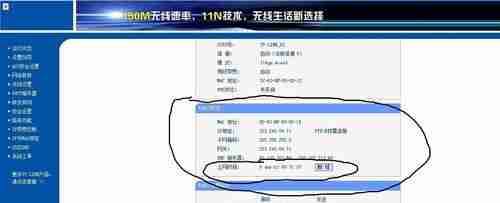Home >Mobile Tutorial >Android Phone >How to connect a desktop computer to a wireless network (Convenience of wireless networks and how to connect a desktop computer)
How to connect a desktop computer to a wireless network (Convenience of wireless networks and how to connect a desktop computer)
- 王林Original
- 2024-09-04 13:34:32737browse
In modern society, wireless networks have become one of the necessary conditions for people to live and work. For users who use desktop computers, how to connect their desktop computers to wireless networks has also become very important. This article will introduce you to how to connect your desktop computer to a wireless network through simple steps, so as to enjoy a convenient network experience.

Before making a wireless network connection, first make sure that your desktop computer has a wireless network card function.
2. Confirm router settings and signal strength
Make sure your router has been set up correctly and the signal strength is sufficient to ensure that your desktop computer can connect to a stable wireless network.
3. Turn on the wireless function on your desktop computer
Turn on the wireless function on your desktop computer by clicking the wireless network icon in the lower right corner of the taskbar or using the shortcut keys.
4. Search for available wireless networks
After the wireless function is turned on, you can see the available wireless network signals in the wireless network list.
5. Select the wireless network you want to connect to
Select the network you want to connect to from the list of available wireless networks and click the Connect button to connect.
6. Enter the wireless network password
If the wireless network you select is password protected, the system will prompt you to enter the password.
7. Wait for successful connection
The system will automatically connect to the wireless network you selected and display a successful connection message.
8. Check whether the network connection is normal
After the connection is successful, you can test whether your network connection is normal by opening a browser or other network applications.
9. Solve connection problems
If you encounter any problems during the connection process, you can troubleshoot them by checking the router settings, restarting the computer, or re-entering the password.
10. Consider network latency and speed
When using a wireless network, you need to take into account possible network latency and slower speeds.
11. Use a signal enhancement device
If your desktop computer is far away from the router or the signal is weak, you can consider using a signal enhancement device to improve signal quality and stability.
12. Adjust wireless network settings
According to your usage needs, you can adjust wireless network settings, such as changing channels, encryption methods, etc. to improve network performance.
13. Update the driver regularly
In order to maintain a good wireless network connection, it is necessary to regularly update the wireless network card driver on your desktop computer.
14. Network Security Protection
When using wireless networks, pay attention to network security to ensure that your desktop computer and personal information are not subject to unauthorized access.
15. Enjoy the convenience and fun brought by wireless network
After completing the above steps, you can enjoy the convenience and fun brought by wireless network and enjoy the Internet world.
The above is the detailed content of How to connect a desktop computer to a wireless network (Convenience of wireless networks and how to connect a desktop computer). For more information, please follow other related articles on the PHP Chinese website!
Related articles
See more- Video editing tutorial with Screen Recorder_Introduction to Video Editing Master
- How to check the income of Alipay Yu'E Bao?
- How to solve the problem that the font size of Baidu Tieba Android version is too small and enable night mode
- Does Yidui Android version support incognito setting_How to set incognito status
- One-click screenshot tutorial: How to take screenshots of Honor Magic5Pro

